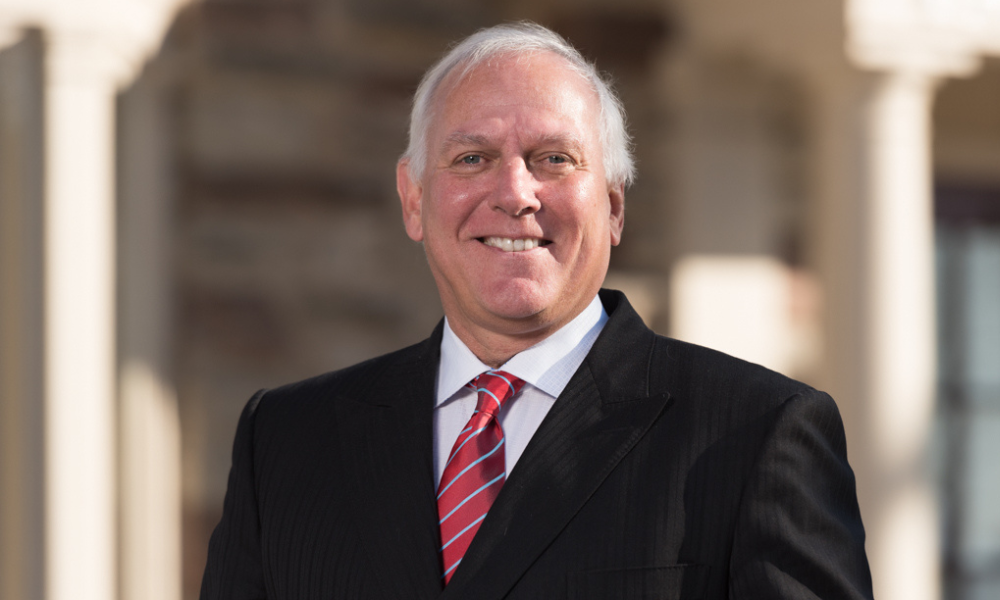Retiree investors overlook income impact of rushing into GICs, says veteran advisor

For many Canadians, Vanguard Canada’s new research comparing bond funds and GICs might come across as academic finger-wagging. But that’s exactly the kind of reality check people need, according to one advisor.
“I think it's a great time to do that with rising rates wreaking havoc on some bond portfolios and increasing the shine of the latest GIC rates,” says David Little, senior investment advisor with iA Private Wealth. His practice, Blue Oceans Private Wealth, focuses on retirement income planning.
David Little was recognized as the Best Financial Advisors in Ontario. Read the full report here.
While 4% or 5% coupon rates on GICs will excite many investors, Little emphasizes real return rates are still firmly in negative territory. Interest paid minus inflation and tax, he says, works out to negative three or four percentage points in real terms, meaning investors in GICs still end up saddled with a shrinking nest egg as it stands.
In its recent study, Vanguard underscored the trade-offs investors might face when opting for GICs over bond funds. Crucially, it made the point that GICs are suitable for investors with high risk aversion, a need for capital protection, and shorter-term capital requirements. That means for Canadians who count on their investments for income, investing in GICs could be the same as slipping on a pair of golden handcuffs.
“One of the biggest items you need to have when you're producing income for people is liquidity,” he says. “Generally, people will go to the highest interest rate, which means they’re locking their money up for longer periods of time, maybe four or five years.”
Many investors might have been left understandably shell-shocked by the simultaneous negative returns of stocks and bonds last year. But as both Little and Vanguard emphasize, 2022 was an anomaly in the long history of asset-class returns. Under most circumstances, bond returns tend to rise when stocks fall, and vice versa.
“Since 2009, the traditional model of balanced portfolios has been broken because we just couldn’t earn enough interest on the fixed-income side,” Little says. “From 60-40, the stock-bond split on a typical balanced portfolio has shifted to probably 75-25.”
To steer clear of the liquidity trap that comes with investing in GICs, Little employs a cash-wedge strategy at his practice. Under that strategy, he’d maintain up to two years’ worth of a client’s required retirement income in high-yield savings accounts that offer 4.5%. With that strategy, the option to invest the money later on is still on the table, and the clients still get a return that’s comparable to a GIC.
Find out what bank has the highest interest rate for high-yield savings account in Canada here.
“We’ve taken our long-term bond investments and brought them all into a much shorter duration, one or two years, because we feel interest rates aren’t going to stay where they are,” he says. “We’re picking up some very substantial interest right now in our bond investments, and the likelihood of some capital growth on some of those bonds is very realistic once interest rates start to drop.”
From Little’s vantage point, the recent revival of inflows into the Canadian GIC space are being driven by short-term decisions. As an advisor tasked with enabling people to take money out of their investments for another 20 to 30 years on average, he sees every dollar locked up in a GIC as another dollar of opportunity lost.
“We always suggest to our clients that when markets correct, that’s when we can make money. Let’s face it: since 2009, we’ve been pretty much in a bull market,” he says. “The reason why people deal with me is I don’t panic. My job is to give them direction and to meet their expectations with their money … if I’m providing income for you for the next 20 years from now, what’s one year of volatility going to do to that overall game plan?”



